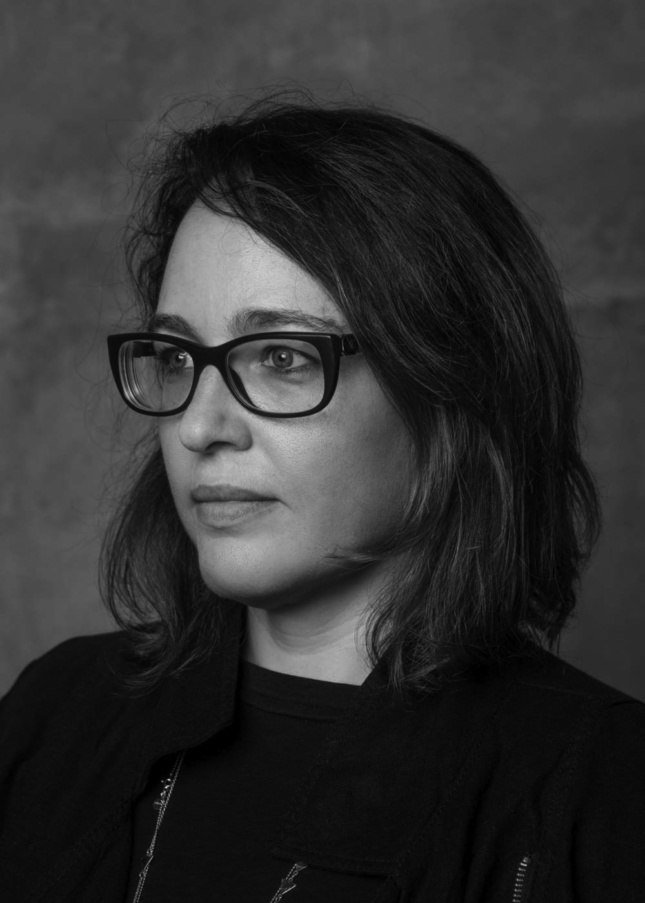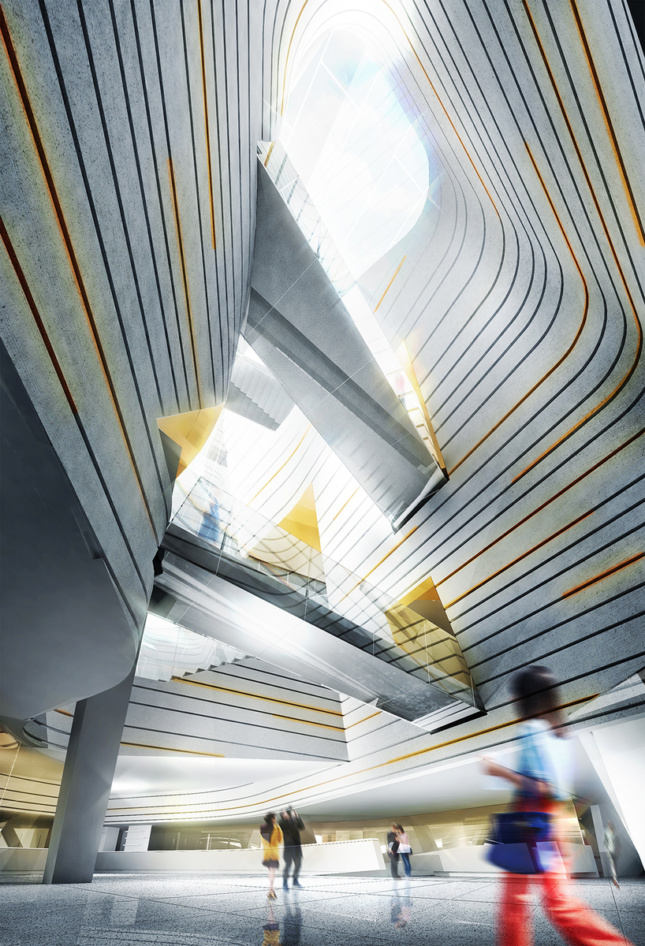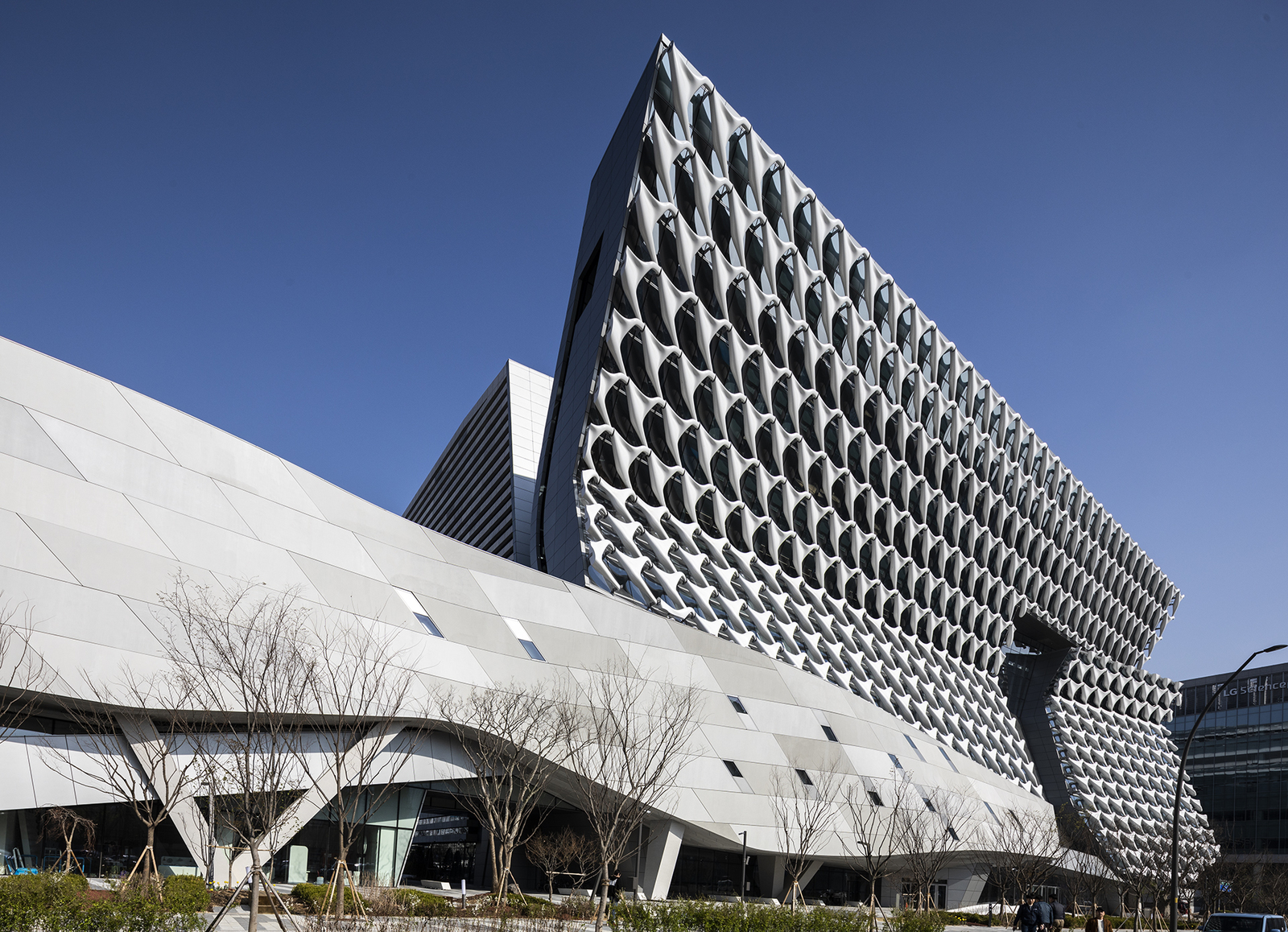Kerenza Harris is the director of design technology at Morphosis, where she works across the firm to integrate advanced computational techniques and high-tech simulations throughout the design process. Ahead of her presentation on system-based design processes and extended reality at TECH+ in Los Angeles next week, AN caught up with Harris to get her takes on prototyping, parametricism, virtual reality, and more.

On going from the screen, to prototype, to facade:
Kerenza Harris: We work in a highly iterative process. We go over a form or design element again and again and again, almost on a loop, and we’re trying to use the new forms in reference to other models and they’re linked parametrically, meaning that there’s a knowledge from the shape itself of what it is, where it is, and what its role is playing.
For example, when we created those modules (those little white forms, or “pillows,” as we call them) for the facade of the Kolon One & Only Tower in Seoul, South Korea, we had to start with the results of the study of light, views. and solar exposure. So the pillows are instantiated in a digital model, as a T-shaped object informed by the performance requirements of these three factors, and then this three-dimensional thing must also have a thickness, so we have to take into account structural demands as well, which we were able to achieve with a monocoque system.
But the key thing is that, from the moment of inception, this piece will continue to exist and evolve throughout the project. We’re trying to avoid erasing or redoing anything—instead, we’re creating a smart element that has an identity and certain characteristics and which will continue to develop throughout the project. This intelligence will influence how the piece modulates itself, when we start inputting certain performance requirements or material characteristics. So it moves forward throughout the project; it’s part of a process of loops that also includes hand sketching, 2D drawing, simulation, analysis, 3D printing, and digital model making.
In the case of the Kolon project, we created a physical, full-size prototype of the facade element. What we were trying to accomplish had never been done in our desired material before, in fiberglass. We had to find a fabricator, get into a relationship with that fabricator, find out how they fabricate the thing in the first place, learn the properties of the materials, composite mix, and so on. We got involved and we built a one-to-one version of this thing.
On how a systems-focused approach can shape how architects work:
Instead of thinking about design as the creation of separate components—such as rooms, doors, facade pieces, toilets and windows, and so forth, we’re taking a step back, and trying to understand projects in terms of organizational systems and workflows. Each of these systems has a behavior and a certain way that they interact with each other. Understanding components in terms of broader systems, we can globalize a workflow—for example, creating rules for certain systems or object classes, instead of applying meaning to individuals elements, in a sense.
Once you establish the system, the pieces are very powerful, and they work on a local scale or a global scale. They can work on urban master plan design or they can work in the design of a chair. It’s really efficient, but also a little tricky because it introduces order but then at the same time may produce disorder you wouldn’t otherwise encounter dealing with objects individually. Things may emerge from these systems that were unanticipated. When you push the number of systems or components to the maximum, and their interaction becomes more and more complex, you may find yourself with new, emergent conditions that you were not planning or designing for. And that’s actually what we’re looking for, what we’re really interested in: something akin to the unexpected conditions of a city that’s developed over a long period of time.

On virtual reality:
Four years ago we were commissioned to transform a suite of hotel rooms at the Therme Vals resort in Switzerland. The existing rooms were very small, but within each we wanted to fit a freestanding, curved glass shower as a kind of light sculpture in the center.
But we were struggling with the models for this project. It was quite difficult, from the digital model and scaled 3D-printed studies, to really assess the height of the table and certain things and how they would be used and navigated by guests, especially because it was all custom-made furniture, custom-made spaces in a very tight area.
And so we built a movie set, almost. We used foam core, and someone went in and actually modeled one-to-one the hotel room using tape and glue so that we could actually stand in the space. It was alright, for a project of that scale—but I immediately thought, “Okay, we need to find another way because this doesn’t quite work.” We needed a way of inhabiting our spaces during design that would be easier, faster, more integrated with our workflow.
So I got interested in VR. The headsets on the market were still clunky then. But we purchased one for the office to try it out, and it immediately made a difference. That development coincided with the beginning of the new Orange County Museum of Art design. In addition to having the typical concerns of an art museum regarding sight-lines and lighting, the building has complex geometry and a big atrium skylight above the entrance. The broader team and project stakeholders were struggling sometimes to understand how the spaces worked because it was hard to experience from the plan or computer screen. And the renderings were strong, but they still couldn’t really capture the feeling of it.
We started putting people in there in VR. We put the designers in, too. VR just gives you a completely different perspective on the work that you do. And it’s also the first time that you can see your project at a one-to-one scale without spending millions of dollars to actually build it. And we’re getting to the point where this immersion can be immediately accessed. Now, in the Dassault Systèmes 3DEXPERIENCE / CATIA parametric software that we use, you can just go in the model with your headset, in real-time. With this platform, you don’t need to render it or use any other software. I have a feeling this will be the next real game-changer for the industry.
For more on the latest in AEC technology and for information about the upcoming TECH+ conference, visit https://techplusexpo.com/events/la/
